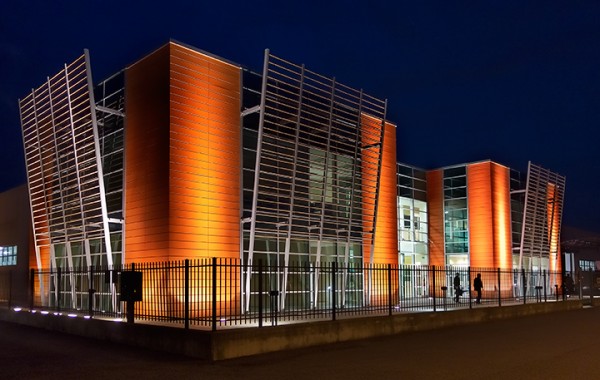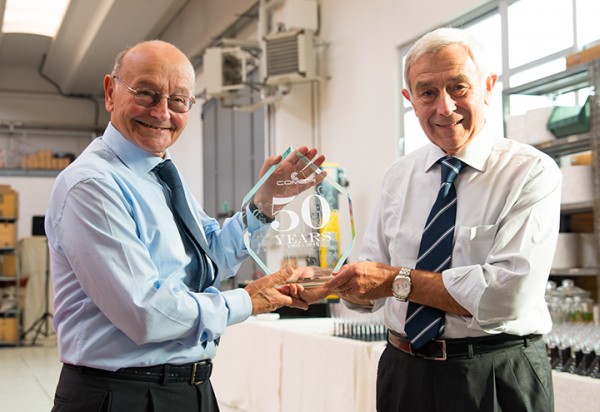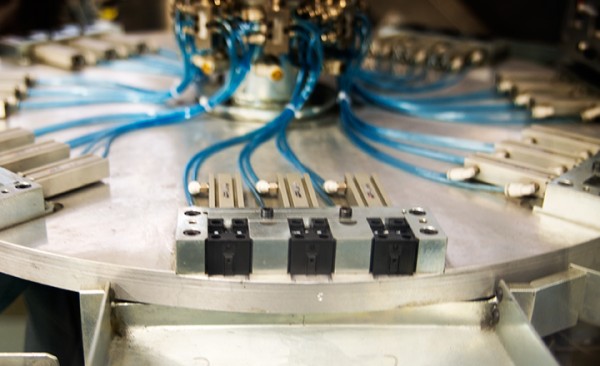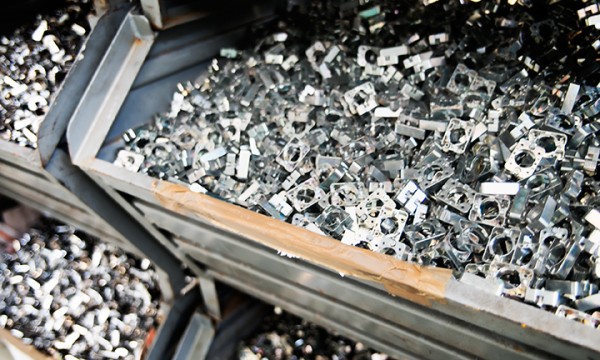For more than 15 years, their commute began at 5:30 a.m. when they would leave their family home, ride bikes to the railway station; take the train 40 kilometers (24 miles) to Milan, and then ride two trams to their workplace. Sixteen hours a day, six days a week with only two weeks off a year for vacation.
The Beginning
Brothers Felice and Luigi Comi, ages 18 and 13, worked together at the Milan sheet metal factory from the late 1940s until 1963. Both brothers were operators on a variety of machine tools that were available at that time, including a single-spindle lathe, pillar-type drills, sawing machines, milling machines, grinders, and shapers. Through these many years of labor and dedication, the Comi brothers acquired the skills needed to help them establish their own company that would produce beautifully designed dies and molds with an international reputation for quality.

Growing up in Northern Italy, the Comi brothers were influenced by the city of Milan — the country’s economic and financial heart. After World War II, Milan also became known as a major world fashion and design center. Felice and Luigi brought these two influences together when they formed their company, Stamplast, which made brass and steel components for chandeliers. Stamplast products, depending upon the complexity of the shape, sold for just a few cents to a half-dollar and were purchased by most of the chandelier manufacturers in Italy and Western Europe.
When founded, in 1963, the company was located in the small town of Merate on the ground floor of an old building in less than 1,000 square feet of space. With nothing more than a strong work ethic and the knowledge they gained at the sheet metal factory, the brothers eked out a living as the only economic support to their families. Soon, they received some financial help from their brother-in-law, Giuseppe, who provided them with financing that allowed them to purchase the tool machines necessary to start manufacturing, including a single-spindle lathe, a milling machine, a pillar-type drill, a saw machine, a sharpener, a grinder, and other small tools. Within just a few years, Felice and Luigi repaid Giuseppe and continued to grow the business.

By 1968, the operation was moved to Brugarolo and settled into a 3,230 square-foot shed. At that time the factory included a shearing machine for production of simple chandelier components. In 1970, the factory space doubled in size by adding another shed for another shearing machine and two new presses for plastic molding.
In 1970, the third Comi brother, Ambrogio, joined the company to take on the responsibility of administration, sales, purchasing, and management which allowed Felice and Luigi to dedicate themselves to increasing workshop and production processes. Consequently, they started producing molds and dies not just for other component manufacturers but for themselves so they could start making their own chandelier products. At this time, another good friend, Luigi, who purchased chandeliers in Europe on behalf of a U.S. company, suggested Stamplast produce the E12 lampholder for the U.S. market. This would help U.S. companies avoid shipping their own E12 lampholders to Europe for assembly and then returning the products back to the U.S. This allowed Stamplast to get a foothold in the U.S. market where it then proceeded to produce a huge amount of the lampholders in a variety of lengths sold throughout North America.
Unfortunately, in the early ’80s there was a sudden and drastic drop of European chandelier supplies to the States because U.S. importers changed their supply companies from Europe to other companies in Asia. This created a serious crisis for Stamplast and the company was forced to quickly find another outlet for its components. With this change, the Comi brothers decided it was a good time to change the company’s focus. So while continuing to produce chandelier components and other minor parts as Stamplast, they formed a new company called Comepi as a manufacturer of foot switches suitable for operator-handled machines.
In 1983, Stamplast was incorporated into Comepi and from that point on Comepi moved forward with the new product line and rapidly integrated other lines of electromechanical products, including limit switches and control units. Since that time, Comepi has increased the range of products it manufactures to include:
- Limit switches — metal casing IP66, plastic casing double insulated, metal and plastic prewired, key-operated types for safety application.
- Command and control units — metal and plastic push buttons, selectors, joysticks, emergency buttons, key-operated buttons, and contacts for control units.
- Foot switches — large and small sizes both with and without protection.
- Thermoplastic enclosures for control units of various shapes and sizes.
 With its new line of products and financial stability, Comepi once again moved its operations to the neighboring town of Robbiate to accommodate the growing company. The Comepi building is a tribute to the legendary design community of Milan and houses all manufacturing as well as administrative offices.
With its new line of products and financial stability, Comepi once again moved its operations to the neighboring town of Robbiate to accommodate the growing company. The Comepi building is a tribute to the legendary design community of Milan and houses all manufacturing as well as administrative offices.
And, just like in the beginning, the Comi brothers are still involved in the business although now Felice’s son, Enrico, is the chief technical officer in charge of product design, dies, and molds. Luigi is responsible for the plastic molding department while his granddaughter Greta handles commercial activities. Ambrogio is the CEO overseeing all the factory operations although he plans to retire soon and his son, Dario, is poised to take his father’s position. This next generation is poised to guide the company into the future. “All these family members in the new generation have a willingness to continue to work and improve. They build upon the work done by their fathers, supported by the experience they’ve gained in other companies, to give Comepi what it needs for future growth,” explained Ambrogio Comi.
One of the areas that both the old and new generations of Comepi continue to emphasize is quality. Each piece that goes into every product is reviewed for quality of design and function that is certified by the UNI ISO 9001. This certification system, conducted by an external certification entity, ensures that the company has implemented and meets quality management system requirements for all areas of the business, including facilities, people, training, services, equipment and design. Once achieved, the certification is maintained by regular audits carried out by the external certification entity. “The purpose of this certification is to assure our customers of the quality of purchased products because all factory processes are certified to meet international standards that do not decay with time,” said Comi. “A constant observance of the quality standards and internal procedures drawn up to obtain and maintain the UNI ISO 9001 certification, along with an automatic quality check on 100% of components, keeps our products always in line or even better, where possible, than similar products from major competitors in the market.”

Reflecting on the past 50 years, the Comi brothers have proven that hard work, dedication, commitment to quality, and family have all contributed to their success. “We have lived very lucky years,” said Ambrogio Comi. “In the ’70s the company was extremely profitable. In fact, earnings were so good that they allowed each of us to build his own house along with expanding the factory,” he explained. In the “less good times” the Comi brothers worked for about four years just to keep the company going at their own expense going so far as to mortgage the factory before sales turned around and they once again enjoyed a healthy profit. “After that down period, we experienced again many years of satisfaction in our activity by acquiring important customers who still in our day allow us to add to the performance of their business,” continued Ambrogio Comi.
As for the future, Comepi will keep providing customers with an increased range and quality of products at competitive prices, including new safety components. With the next generation of the Comi family moving into leadership roles, they look forward to what the next 50 years will bring.
[hozbreak]



